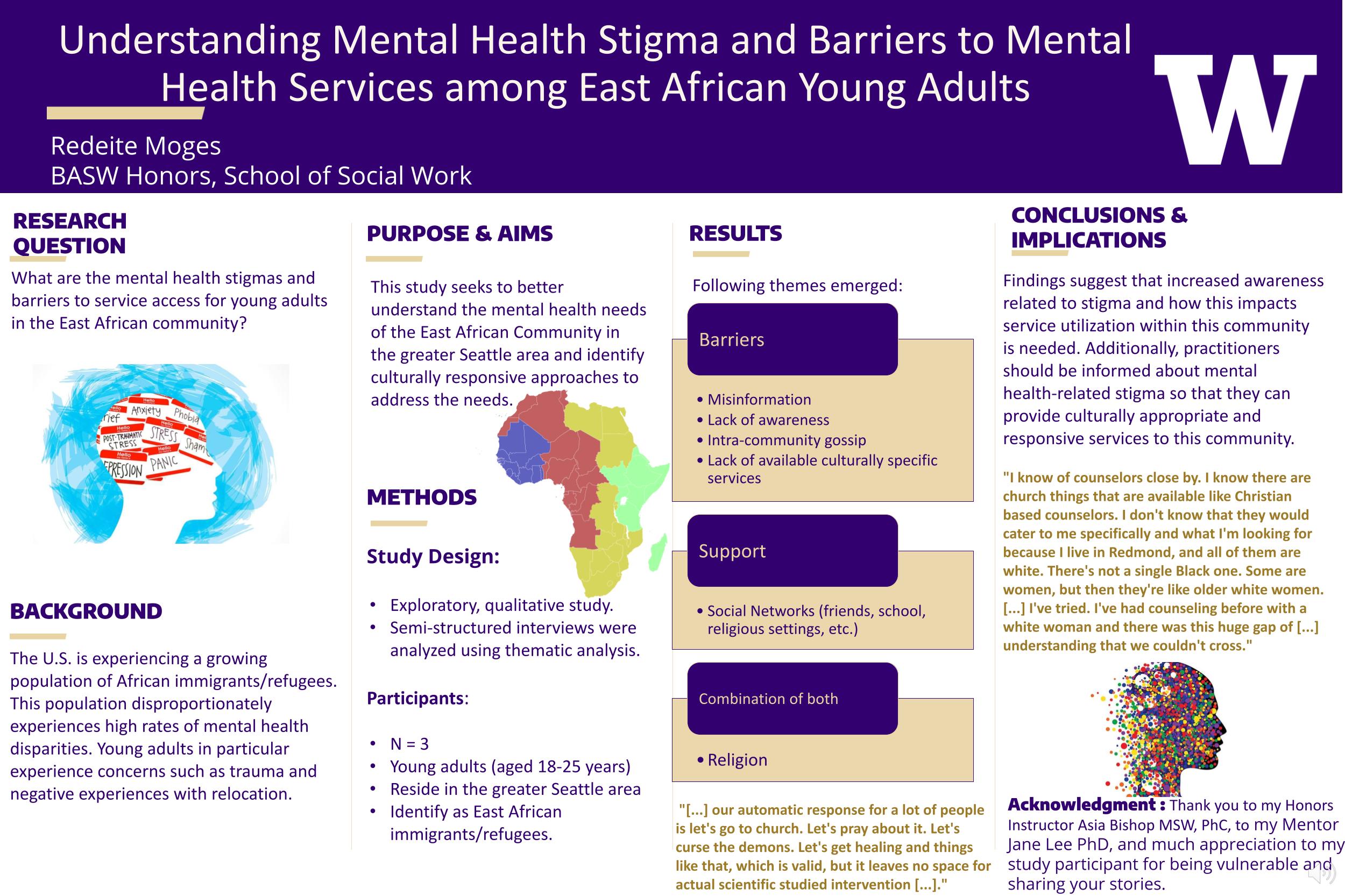Mental Health Stigma in the East African Community

Abstract
While the US has a growing population of African immigrants/refugees more studies are needed to understand the perceptions and needs for mental health services among this population. Given the unique experiences of the African Community, there are currently limited resources, studies, and conversations happening in this community. There has been little to no research conducted on mental health in the East African community. To fill this gap this study aims to better understand the stigma and barriers related to mental health service access for young adults in the East African community. Doing so will help inform culturally responsive approaches to address the needs faced by this population. In line with these objectives, the current study employs a qualitative design to address the following research question: How can we understand mental health stigma and barriers to mental health services for young adults in the East African community? Semi-structured interviews were conducted with 3 young adults. Questions focused on background and immigration experience, mental health, and mental health services. Interviews were transcribed and coded deductively. Thematic analysis was then used to condense codes into broader themes. Triangulation was used as a strategy to enhance credibility and trustworthiness. Themes that emerged related specifically to barriers, support, and a combination of both. Barriers included misinformation and lack of awareness, intra-community gossip, and lack of available and culturally specific services and providers. Supports focused primarily on social networks. Religion was seen as a barrier and support. This pilot study provides an in-depth understanding of barriers and stigma of mental health in the East African Community among young adults. With this information practitioners, community partners, as well as community members can be informed, and practitioners can make positive changes to provide culturally appropriate and responsive services to this community.